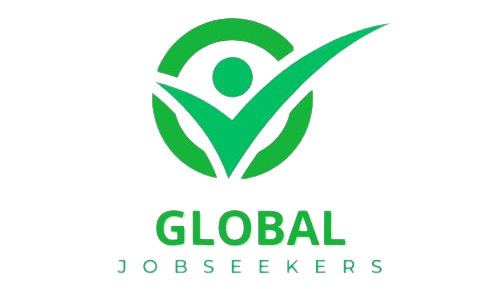Building a successful career in healthcare requires a combination of education, practical experience, networking, and continuous professional development. The healthcare industry is diverse and offers numerous career paths, from clinical roles to administrative and support positions. Here’s a guide to help you navigate your journey in healthcare: 1. Identify Your Career Interests The healthcare field encompasses a wide range of roles, so it’s important to determine which aspect of healthcare excites you the most. Clinical Careers: Roles like doctors, nurses, physical therapists, and paramedics focus on direct patient care and require specialized education and training. Non-Clinical Careers: Healthcare administrators, medical researchers, and health educators focus on the operational, technical, or strategic aspects of healthcare. Tip: Research various healthcare careers and talk to professionals in the field to understand the day-to-day responsibilities of different roles. 2. Pursue Relevant Education and Training Education is the foundation of a successful healthcare career. The specific qualifications you need will depend on the role you’re aiming for. Medical and Clinical Roles: Most clinical positions, such as physicians, nurses, and technicians, require a formal education, certifications, and specialized training. Non-Clinical Roles: Many healthcare administrative and support positions require degrees in healthcare management, public health, or healthcare IT, among other disciplines. Tip: Choose accredited programs and internships that align with your career goals. Stay updated on changes in educational requirements for your desired role. 3. Gain Hands-On Experience Experience is essential in healthcare, where practical knowledge is just as important as academic learning. Internships and Volunteering: Participating in internships, volunteer work, or shadowing professionals in your field can help you gain practical experience and build your resume. Entry-Level Jobs: Start with entry-level positions like medical assistants, health technicians, or administrative assistants to learn the inner workings of healthcare organizations. Tip: Gain as much hands-on experience as possible to build your skills and gain insights into patient care or healthcare operations. 4. Develop Strong Communication Skills Effective communication is crucial in healthcare, whether you’re interacting with patients, colleagues, or supervisors. Patient Interaction: Clear and compassionate communication with patients and their families is vital in providing excellent care. Collaboration: Healthcare professionals often work as part of a team, so being able to communicate and collaborate effectively is essential for successful patient outcomes. Tip: Focus on developing active listening skills and empathy to enhance your communication with patients and colleagues. 5. Pursue Certifications and Specializations Certifications and specialized training can set you apart from other candidates and help you advance in your career. Clinical Certifications: Depending on your role, you may need certifications like Basic Life Support (BLS), Advanced Cardiac Life Support (ACLS), or a professional license in your specific field (e.g., Registered Nurse, Medical Doctor, etc.). Specializations: Pursuing further education or certification in specialized areas (e.g., oncology, pediatrics, orthopedics) can open up more career opportunities and increase your earning potential. Tip: Continuously pursue certifications and specializations relevant to your field to enhance your expertise and stay competitive. 6. Network and Build Professional Relationships Networking is key to advancing your career in healthcare. Connecting with other professionals in your field can provide valuable insights, mentorship, and job opportunities. Professional Associations: Join healthcare organizations, such as the American Medical Association (AMA) or American Nurses Association (ANA), to meet other professionals and stay informed about industry trends. Mentorship: Seek mentors who can offer guidance, advice, and career tips based on their experiences. Tip: Attend healthcare conferences, workshops, and seminars to expand your network and learn from industry leaders. 7. Stay Up-to-Date with Industry Trends Healthcare is a constantly evolving field, with new technologies, treatments, and regulations emerging regularly. Continuing Education: Stay informed about the latest healthcare trends through workshops, webinars, and online courses. Technology Integration: Familiarize yourself with healthcare technology such as electronic health records (EHR), telemedicine, and health informatics, as these are becoming increasingly important in modern healthcare settings. Tip: Make it a priority to continually update your skills and knowledge to remain relevant in the healthcare industry. 8. Demonstrate Leadership and Initiative Leadership skills are highly valued in healthcare, whether you’re aiming for a managerial position or working as part of a team. Initiative: Take the lead on projects, volunteer for new responsibilities, and demonstrate your ability to solve problems. Management Roles: If you’re interested in advancing into management or administrative roles, consider gaining experience in team leadership, budgeting, and healthcare operations. Tip: Look for leadership development opportunities to enhance your managerial skills, even in non-managerial roles. 9. Focus on Work-Life Balance and Self-Care Healthcare careers can be demanding, often involving long hours, emotional stress, and physical exertion. It’s essential to prioritize your well-being to maintain a long-lasting and successful career. Stress Management: Develop strategies to manage stress, such as mindfulness, exercise, and time management techniques. Work-Life Balance: Set boundaries to ensure you’re able to balance your career with your personal life, and make time for rest and relaxation. Tip: Focus on maintaining a healthy work-life balance to avoid burnout and stay motivated in your healthcare career. 10. Set Long-Term Career Goals Building a successful healthcare career takes time, so it’s important to set clear, achievable long-term goals. Career Planning: Set short-term and long-term goals, whether it’s gaining specific certifications, transitioning to a leadership role, or specializing in a particular area of healthcare. Self-Reflection: Regularly evaluate your career path and adjust your goals as needed to ensure you’re on track to achieving your vision. Tip: Periodically assess your progress and set new goals to keep moving forward in your career.










